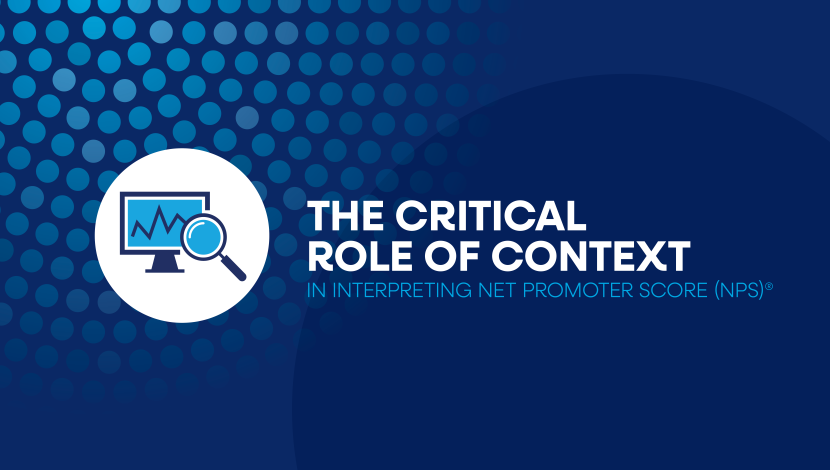In the realm of customer experience management, the Net Promoter Score (NPS) has emerged as a widely used metric for assessing customer loyalty and satisfaction. It’s a simple yet powerful tool, calculated by subtracting the percentage of detractors (those unlikely to recommend) from the percentage of promoters (those highly likely to recommend). However, while NPS provides valuable insights into customer sentiment, it’s crucial to recognize that context is everything when interpreting its results.
Understanding NPS
Before delving into the significance of context, let us briefly revisit how NPS works. Customers are typically asked a single question: “How likely are you to recommend our product/service to a friend or colleague?” Respondents then provide a rating on a scale of 0 to 10. Based on their responses, customers are categorized into three groups: promoters (9-10), passives (7-8), and detractors (0-6). The NPS is then calculated by subtracting the percentage of detractors from the percentage of promoters.
The Importance of Context:
While NPS offers a straightforward way to gauge customer loyalty, its interpretation hinges heavily on context. Here’s why:
- Industry Variability: Different industries have different benchmarks for NPS. A score that is considered excellent in one industry might be average or even poor in another. For example, a score of 50 might be exceptional for a software company but below par for a luxury hotel chain. Thus, it’s essential to compare NPS scores within the same industry to gain meaningful insights.
- Company-Specific Dynamics: Factors such as company size, market position, and customer demographics can significantly impact NPS. A startup targeting tech-savvy millennials may have a different NPS trajectory compared to a legacy corporation catering to baby boomers. Understanding these nuances is essential for accurate interpretation.
- Temporal Considerations: NPS isn’t static; it evolves over time. Seasonal variations, product launches, marketing campaigns, or operational changes can influence NPS scores. Thus, it’s crucial to track NPS trends longitudinally and analyze changes in conjunction with relevant events or initiatives.
- Qualitative Insights: While NPS provides a quantitative measure of customer loyalty, it’s equally important to supplement it with qualitative insights. Open-ended survey questions, customer feedback, and social media sentiment analysis can offer valuable context and enrich the understanding of NPS scores.
- Competitive Landscape: NPS gains significance when viewed in the context of competitors’ scores. A high NPS might be commendable, but if competitors are consistently outperforming, it signals a need for improvement. Benchmarking against industry peers provides valuable context and helps set realistic goals.
Best Practices for NPS Interpretation:
To derive meaningful insights from NPS, consider the following best practices:
- Benchmark against industry standards and competitors.
- Analyze trends over time and correlate changes with relevant events.
- Augment quantitative data with qualitative insights.
- Contextualize NPS scores within the company’s broader strategic objectives.
- Solicit feedback from frontline employees to understand customer sentiments at various touchpoints.
In conclusion, while NPS serves as a valuable tool for assessing customer loyalty, its interpretation is contingent upon context. By considering industry benchmarks, company-specific dynamics, temporal variations, qualitative insights, and competitive landscape, organizations can glean actionable insights from NPS scores and drive continuous improvement in customer experience. Remember, context is key—it transforms NPS from a mere number into a strategic compass guiding customer-centric decision making.


